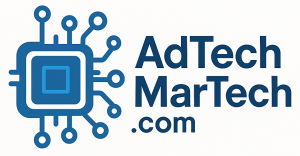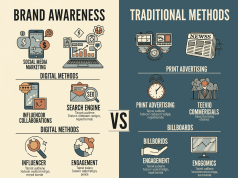In today’s digital landscape, programmatic advertising has emerged as a cornerstone for marketers looking to elevate their campaigns and maximize return on investment (ROI). By automating the buying and selling of ad space through real-time bidding, businesses can target specific audiences with remarkable precision. However, achieving a significant ROI requires more than just deploying programmatic techniques; it demands a strategic approach. Here are best practices to help you optimize your programmatic advertising efforts.
1. Understand Your Audience
Data-Driven Insights
Begin by analyzing your audience data. Utilizing tools like Google Analytics or customer relationship management (CRM) systems can unveil insights about your customers’ preferences, behaviors, and demographics. This information helps in crafting tailored campaigns that resonate with your target audience, ensuring higher engagement and conversions.
Segment Your Market
Segment your audience based on criteria such as age, location, interests, and online behavior. By doing this, you can create highly personalized ads that speak directly to different audience segments, improving the likelihood of conversion.
2. Set Clear Goals
Define Key Performance Indicators (KPIs)
Establish clear objectives for your programmatic campaigns, whether it’s increasing brand awareness, generating leads, or driving sales. Identifying KPIs aligned with your business goals allows you to measure success effectively and makes it easier to adjust tactics as needed.
Focus on the Customer Journey
Map out the customer journey to understand where programmatic advertising fits best. Tailor your KPIs to the stages that matter most, whether it’s first-touch, consideration, or conversion.
3. Optimize Ad Creatives
A/B Testing
Regularly perform A/B testing on ad creatives to identify which versions yield the best results. Test different headlines, visuals, and calls to action to find what resonates most with your audience. Continuous optimization can lead to higher engagement rates and, ultimately, better ROI.
Engaging Content
Invest in high-quality ad creatives that grab attention and convey your message succinctly. Visuals should be compelling and align with your brand identity. Remember, the first impression counts!
4. Leverage Automation and Machine Learning
Programmatic Platforms
Utilize advanced programmatic platforms that offer machine learning capabilities. These platforms can analyze performance data in real time, automatically adjusting bids and targeting parameters to enhance campaign outcomes.
Lookalike Audiences
Employ lookalike audience targeting to reach potential customers who exhibit similar characteristics to your existing customer base, thereby optimizing ad spend and improving conversion chances.
5. Utilize Retargeting Strategies
Ad Retargeting
Implement retargeting strategies to engage users who have previously interacted with your brand but didn’t convert. Custom ads can remind them of your products, thus increasing the chances of bringing them back to your site.
Dynamic Retargeting
Dynamic retargeting serves personalized ads featuring products or services that users viewed. This tailored approach effectively nurtures potential customers and encourages them to complete their purchases.
6. Monitor and Analyze Performance
Regular Reporting
Establish regular reporting routines to analyze campaign performance against your KPIs. Tools like Tableau or Google Data Studio can help visualize complex data for better understanding.
Pivot and Adapt
Use the insights gained to adapt your strategies. If certain channels or creatives aren’t performing, be ready to pivot and reallocate your budget to more effective tactics.
7. Embrace Transparency and Brand Safety
Choose Trusted Partners
Work with reputable programmatic ad partners. Transparency in ad placements and data usage is crucial to maintaining brand integrity and safety.
Implement Brand Safety Measures
Utilize brand safety measures and tools to ensure your ads appear in appropriate contexts, protecting your brand’s reputation and maximizing the effectiveness of your campaigns.
Conclusion
Maximizing ROI through programmatic advertising is an ongoing process that requires diligent planning, execution, and adaptation. By understanding your audience, setting clear goals, optimizing creatives, leveraging technology, implementing retargeting strategies, monitoring performance, and ensuring brand safety, you can create effective campaigns that deliver measurable results. As the digital landscape evolves, staying informed about the latest trends and continuously refining your approach will enable you to harness the full potential of programmatic advertising, leading to exceptional ROI.









